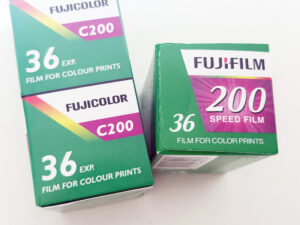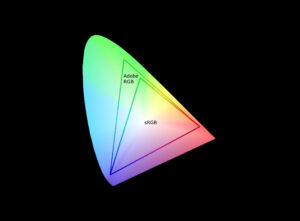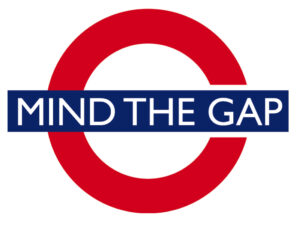One of the most discussed topics in marketing today is the long vs. short debate. Should you focus on long-term brand-building or prioritize short-term performance marketing for immediate returns? The truth is, success lies in balancing both approaches strategically.
The long and short of it: we’ll break down the long vs. short debate, explain the strengths and weaknesses of each strategy, and offer actionable insights to help you craft a balanced marketing plan.
What is Long-Term Marketing?
The Foundations of Long-Term Marketing
Long-term marketing, also known as brand-building, focuses on creating emotional connections with your audience. It emphasizes strategies that enhance brand awareness, loyalty, and trust over time.
Key Features of Long-Term Marketing
- Emotional Appeal: Builds strong associations with your brand.
- Broad Reach: Targets the entire market, including light buyers.
- Sustainable Growth: Drives future sales and market share.
The Benefits of Long-Term Marketing
Establishing Mental Availability
As highlighted by the Ehrenberg-Bass Institute, long-term strategies create mental availability, ensuring your brand is top-of-mind when customers make purchase decisions.
Driving Brand Loyalty
A strong brand presence builds trust and loyalty, which can shield your business from competitors in the long run.
Enhancing Pricing Power
As Warren Buffett suggests, a strong brand allows for pricing power, enabling you to maintain profitability even in competitive markets.
The Challenges of Long-Term Marketing
Delayed Results
Brand-building takes time, often yielding results months or years after implementation.
Resource-Intensive
Effective long-term campaigns require substantial investment in creative assets and media placement.
What is Short-Term Marketing?
The Essentials of Short-Term Marketing
Short-term marketing, also called performance marketing, focuses on driving immediate results such as sales, leads, or conversions. It uses targeted campaigns aimed at audiences who are ready to act now.
Key Features of Short-Term Marketing
- Targeted Approach: Focuses on high-intent audiences.
- Measurable Results: ROI can be tracked in real-time.
- Quick Wins: Delivers immediate business outcomes.
The Benefits of Short-Term Marketing
Immediate Revenue
Short-term campaigns generate quick cash flow, which can be crucial for businesses with tight budgets.
Data-Driven Decisions
With clear metrics, marketers can optimize campaigns in real-time for maximum efficiency.
Testing Opportunities
Short-term strategies allow for A/B testing to refine messaging, creative, and audience targeting.
The Challenges of Short-Term Marketing
Unsustainable Growth
Relying solely on short-term campaigns can lead to a plateau, as their effectiveness diminishes without brand reinforcement.
Price Sensitivity
Short-term tactics, such as discounts, may attract price-sensitive customers rather than loyal advocates.
Neglecting Brand Equity
Overemphasis on immediate results can erode long-term brand equity.
The Long vs. Short Debate: Key Insights
Why Both Strategies Are Essential
Marketers often pit long-term and short-term strategies against each other, but they are most effective when used together. A balanced approach ensures immediate results while securing sustainable growth.
The 60/40 Rule
Les Binet and Peter Field suggest allocating 60% of your budget to brand-building and 40% to short-term activation. This balance maximizes both ROI and brand equity.
Complementary Effects
- Long-term campaigns create demand by building awareness and trust.
- Short-term campaigns capture demand by converting ready-to-buy customers.
Finding the Right Balance
Crafting a Balanced Marketing Plan
Step 1: Set Clear Goals
- Define long-term objectives, such as market share growth or brand awareness.
- Identify short-term KPIs, such as sales or lead generation.
Step 2: Align Messaging
Ensure that your short-term campaigns align with your long-term brand narrative. This avoids mixed messages and reinforces brand consistency.
Step 3: Use Data Wisely
Leverage AI tools and analytics to monitor the performance of both strategies and adjust your approach as needed.
Practical Examples of Balance
Nike’s Strategy
Nike invests heavily in long-term brand-building through inspirational ads and sponsorships while running targeted short-term campaigns to promote specific products.
Amazon’s Approach
Amazon uses short-term tactics like paid search ads for immediate sales while continuously building brand trust through customer experience and innovation.
Common Misconceptions About Long and Short Strategies
Myths Debunked
Myth 1: Long-Term Marketing is Just for Big Brands
Even small businesses benefit from long-term strategies by creating a distinct identity and building customer trust.
Myth 2: Short-Term Campaigns Are Always Transactional
Short-term strategies can also be creative and engaging while driving conversions.
Myth 3: You Must Choose One Over the Other
The debate isn’t about choosing one approach but understanding how to integrate both effectively.
Mastering the Long and Short Debate
Balancing long-term brand-building and short-term performance marketing is essential for any business aiming for sustainable growth and immediate impact. While long-term strategies ensure your brand’s future relevance, short-term tactics drive immediate results to keep the momentum going.
By understanding the unique strengths of each approach and aligning them with your business goals, you can craft a marketing strategy that delivers both instant wins and lasting success.







































































